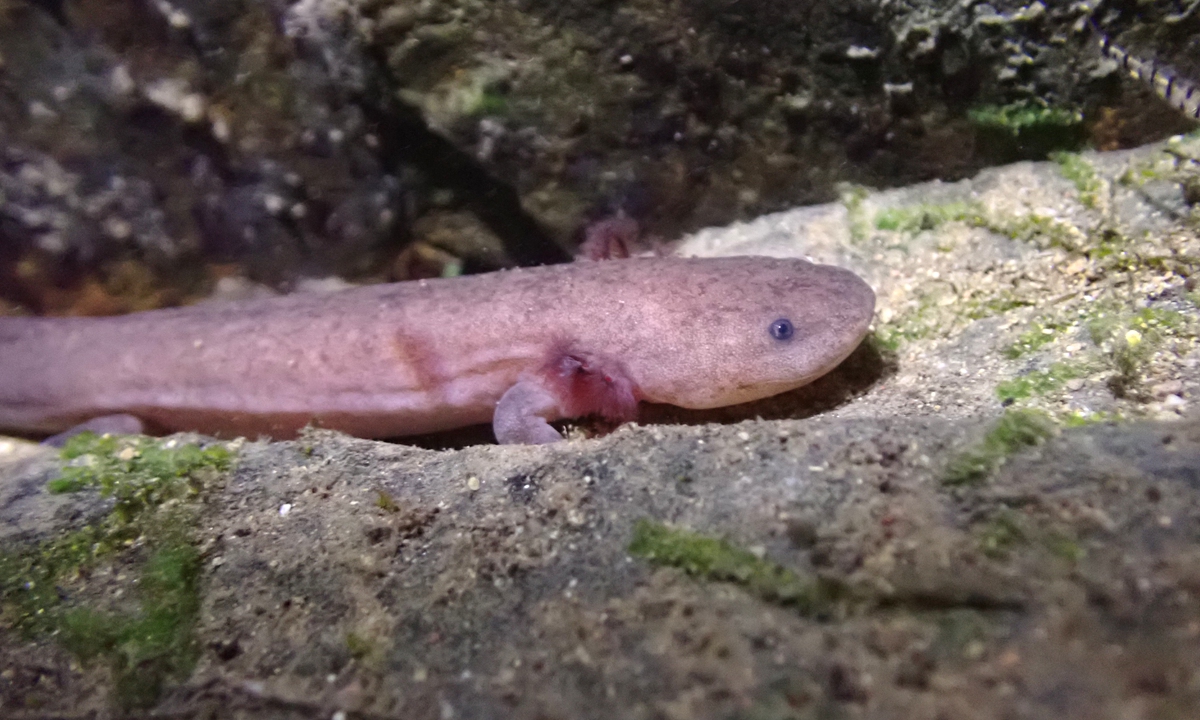
The Chinese giant salamanders known as Andrias jiangxiensis sp. nov.discovered in Jiangxi Province Photo:Courtesy of Kunming Institute of zoology, CAS
A new species of wild, genetically pure Chinese giant salamanders known as
Andrias jiangxiensis sp. nov. has been discovered in Jing'an county, Jiangxi Province.
Discovered by researchers at the Kunming Institute of zoology, CAS. the newly identified
Andrias jiangxiensis sp. nov. is the first identified pure species of Chinese giant salamander.
The newly identified species is the result of 18 months of field research, during which time biologists monitored the reproduction conditions of 700 Chinese giant salamanders, including adults, sub-adults and newly hatched babies. The researchers determined that this line had not been breeding with outside individuals, thus maintaining their genetic purity.
The study provides an important basis for evaluating the species' endangered degree and formulating corresponding protection action plans.
Che Jing, lead researcher of the project, told the Global Times that the discovery of jiangxi
Andrias jiangxiensis sp. nov. brings hope to the conservation of the extremely precious Chinese giant salamanders.
The Chinese giant salamander is a rare amphibian unique to China that lives in the fresh water. Dubbed as a "living fossil," the species has been around for at least 165 million years. The earliest fossil of the kind was discovered in China's Inner Mongolia Autonomous Region.
The species is a national secondary key protection wildlife species in China, where it has been affectionately called the "doll fish" due to the unique sounds it makes that are similar to a baby crying.
According to the research report, the habitat for
Andrias jiangxiensis sp. nov. only covers 36 square kilometers, leaving it in relative isolation. However, rapid changes to the environment may lead the species to becoming endangered so a plan of action is urgently needed.
"The study provides a reference and demonstration for endangered species affected by human activities to formulate and adjust protection plans," Che noted.
"We expect to find more similar purebred groups in the wild and will draw up scientific and effective protection measures on this basis."




